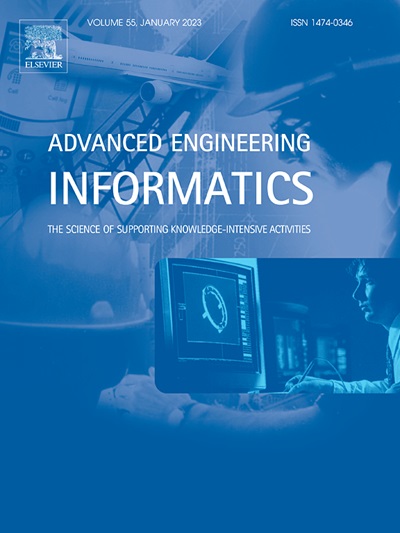基于双激光和DeepCrack网络的水下混凝土裂缝宽度自动测量系统
IF 9.9
1区 工程技术
Q1 COMPUTER SCIENCE, ARTIFICIAL INTELLIGENCE
引用次数: 0
摘要
针对水下大坝裂缝测量自动化程度低、多界面折射畸变导致测量误差大的问题,提出了一种基于“成像定标-智能分割-精确测量”的水下大坝裂缝测量自动化方法。首先,利用Snell定律建立了水下光传播模型,实现了像素坐标与真实世界坐标之间的转换。通过将水下摄像机标定与折射补偿相结合,有效地减小了折射畸变。其次,高精度裂缝分割模型,结合双激光技术,实现了裂缝宽度的自动测量。在真实数据集上的对比实验验证了DeepCrack在水下裂缝分割方面的优越性能,水下光学暗室测量实验表明,该方法在0.5 ~ 2.0 m的测量范围内实现了毫米级的精度。此外,所开发的水下裂缝测量硬件和软件已成功应用于实际场景,为水下裂缝测量可视化提供了可靠的技术支持。本文章由计算机程序翻译,如有差异,请以英文原文为准。
Automated underwater concrete crack width measurement system based on dual lasers and DeepCrack network
To address the challenges of low automation in underwater dam crack measurement and errors caused by multi-interface refraction distortion, this study proposes an automated measurement method based on “imaging calibration - intelligent segmentation - precise measurement.” First, an underwater light propagation model was developed using Snell’s law, which enables the transformation between pixel coordinates and real-world coordinates. By integrating underwater camera calibration and refraction compensation, refraction-induced distortion is effectively minimized. Next, a high-precision crack segmentation model, combined with dual laser technology, enables automated crack width measurement. Comparative experiments on real datasets validate the superior performance of DeepCrack in underwater crack segmentation, and underwater optical darkroom measurement experiments show that the proposed method achieves millimeter-level accuracy within a measurement range of 0.5 to 2.0 m. Additionally, the developed hardware and software for underwater crack measurement were successfully applied in real scenarios, providing reliable technical support for visualizing underwater crack measurement.
求助全文
通过发布文献求助,成功后即可免费获取论文全文。
去求助
来源期刊

Advanced Engineering Informatics
工程技术-工程:综合
CiteScore
12.40
自引率
18.20%
发文量
292
审稿时长
45 days
期刊介绍:
Advanced Engineering Informatics is an international Journal that solicits research papers with an emphasis on 'knowledge' and 'engineering applications'. The Journal seeks original papers that report progress in applying methods of engineering informatics. These papers should have engineering relevance and help provide a scientific base for more reliable, spontaneous, and creative engineering decision-making. Additionally, papers should demonstrate the science of supporting knowledge-intensive engineering tasks and validate the generality, power, and scalability of new methods through rigorous evaluation, preferably both qualitatively and quantitatively. Abstracting and indexing for Advanced Engineering Informatics include Science Citation Index Expanded, Scopus and INSPEC.
 求助内容:
求助内容: 应助结果提醒方式:
应助结果提醒方式:


